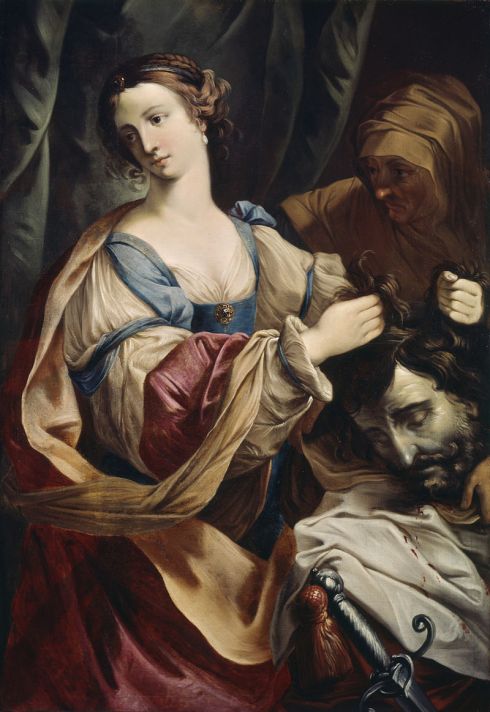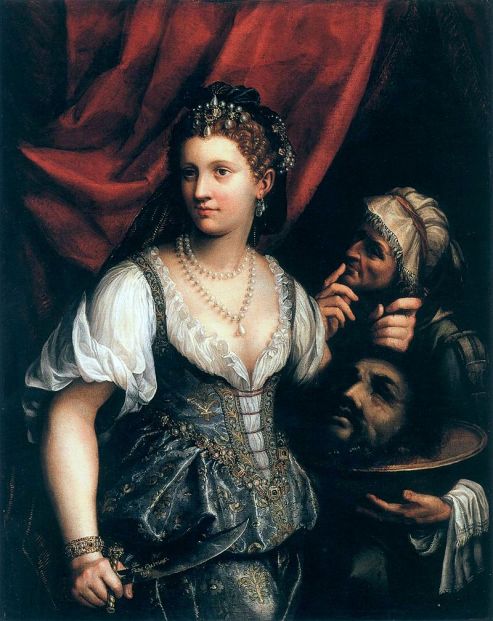The beheading of Holofernes by Judith is a biblical episode recounted in the Book of Judith, a 2nd century text deemed apocryphal by the Jewish and Protestant traditions, but included in the Catholic editions of the Bible.
Also, the story of Judith and Holofernes was the subject of many paintings and sculptures in the Christian art of Renaissance and Baroque periods.
This post compares the different interpretations this subject has received by five female artists.
The story
Judith is a beautiful Jewish widow and Holofernes, who desire her, take her to his tent. He was an Assyrian general who was about to destroy the city of Bethulia, Judith’s home. Overcome with drink, he passes out and Judith taking advantage of that and behead him with his own sword. His head was taken away in a basket (often depicted as carried by an elderly female servant).
In art
Artists have mainly chosen two scenes: the decapitation with Holofernes supine on the bed; or, the heroine holding/carrying his head. It’s common to see her assisted by a maid in European art. For many artists and scholars, Judith’s sexualised femininity interestingly and sometimes contradictorily combined with her masculine aggression.
During the Baroque period, the story of Judith was particularly popular, and not only in the visual arts, also in literature, theatre and music. Her story was understood as an example of the victory of virtue over vice.
The story of Judith was treated by many of the best artists of European Renaissance and Baroque as Donatello, Michelangelo, Botticelli, Titian, Rubens, Rembrandt and Caravaggio. But, as it couldn’t be otherwise, many women artists have treated it too.
Judith as a figure of strong woman who takes the law into her own hands couldn’t be more attractive to the women artists. These artists, who needed to face many injustices as disloyal competition for works and defamations, saw in Judith a powerful feminine figure, in fact, Judith was a common example of the Power of Women iconographic theme in the Northern Renaissance.
The five Judiths
Giulia Lama chose to depict the moment before the decapitation, what was not very common. In the painting we can see Holofernes still alive, laying on the bed. There are two more characters in the painting Judith and her maid. Judith is depicted here looking up and with her hands together as in a prayer, maybe wondering what she should do. There is no sign of violence in it, we cannot even see the sword that will be used by Judith to kill her offender.

Artemisia Gentileschi’s work is very inspired by Caravaggio’s version of this story. She chose the moment of the beheading. She depicted Judith holding the sword with one hand and the head of Holofernes with the other, while the maid is holding Holofernes’s hands. This is the only version of this subject painted by a woman that reveals a high level of violence by showing the moment of the decapitation. But Gentileschi has another painting of this subject, where we can see Judith and the maid with Holofernes’s head in a basket.


Lavinia Fontana decided to depict the moment immediately after the beheading. We can see how Judith is putting the head of Holofernes in a basket. The body of Holofernes is on the bed but the curtains don’t allow us to see it clearly. The maid, in this painting, helps Judith by holding the basket. The sword is on the floor, at Judith’s feet.

Elisabetta Sirani and Fede Galizia have chosen the same scene, just as Fontana, they decided to depict the moment after of the decapitation. But differently of Fontana’s painting they don’t show the bed or the body of Holofernes. The two paintings are very similar; in both we can see Judith holding the head of Holofernes, in Galizia’s work Judith is putting his head on a plate. In both she is the company of an old maid.











You must be logged in to post a comment.